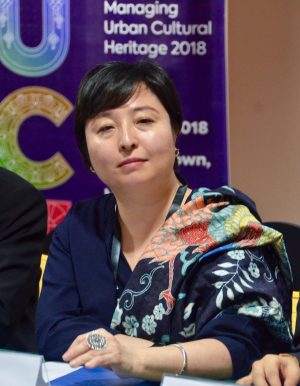SUPPORTED by the Penang state government and in collaboration with the Malaysian National Commission for UNESCO as well as the Japan Foundation, an International Conference on Managing Urban Cultural Heritage (MUCH) was held on Oct 1 and will last for the next 3 days at the Bayview Hotel in George Town.
The 4-day conference will feature a total of 37 prominent speakers and moderators from 15 countries who will be sharing their initiatives on the management of urban heritage, discussions on the different approaches towards heritage management and innovative strategies as well as engagement in constructive discussions on the existing challenges and opportunities in the area of urban cultural heritage management.
More than 100 participants were registered for the conference which will cover themes such as urban archaeology, globalisation and sustainable tourism, disaster risk reduction, cultural heritage education, conservation of objects and collections, documentations, rejuvenation of urban heritage and online mobilization in heritage management.
Chief Minister Chow Kon Yeow, in his opening speech as the Guest of Honour, remarked on the importance attached to cultural heritage by everyone in Penang, be it the state government, local councils or the various communities.
“Cultural heritage has always been an important element of George Town and Penang as a whole. We have inherited traditions, living expressions, buildings, monuments and collections of objects from our ancestors which have over time given us a sense of identity and continuity, providing a link from our past, through the present and into the future,” Chow said.
“In Penang, we treasure these cultural heritage elements and the Penang state government, together with its people, has worked hard to safe keep our cultural heritage to be passed on to our children.
“Our communities, many of whom are here with us today, have a strong sense of identity and responsibility to this city that we love so much. It is through such strong commitment from everyone that George Town continues to be the regional hub in the creating, maintaining and transmitting of cultural heritage,” added the chief minister.
Also present were George Town World Heritage Incorporated (GTWHI) general manager Dr. Ang Ming Chee, fellow GTWHI directors and elected representatives Teh Lai Heng (Komtar), Daniel Gooi (Pengkalan Kota) and Wong Hon Wai (Bukit Bendera), MBPP mayor Datuk Yew Tung Seang, UNESCO Jakarta Programme Specialist for Culture Moe Chiba and UNESCO Bangkok National Professional Officer Montira Horayangura Unakul.
At a press conference held after the officiating ceremony of the conference, Chiba also spoke on the selection of George Town for participation in two heritage pilot projects.

She revealed that the first pilot project would focus on the inventory of intangible cultural heritage with community participation and George Town is the only Asian city chosen for the project, the other two from Africa and Latin America respectively.
“The approach is to involve the local community to do their own inventory. It’s not going to be led by academicians but is a local community-led initiative. It’s very important to draw an inventory at the very local level because ultimately the communities and the stakeholders will feel committed to continue with the practice,” she told the media.
Chiba added that the second pilot project would look at how to develop the local industries at world heritage sites by engaging all the related parties to come up with an action plan.
“We are starting this project that seeks to bring in all these related parties, museums, creative industries centre, local artisans, heritage practitioners and site managers together to develop an action plan for a better livelihood in heritage cities,” she said.
She also cited the potential of George Town city in delivering the results envisaged by the projects as the reason it was chosen by UNESCO.
Story by Victor Seow
Pix by Alissala Thian

